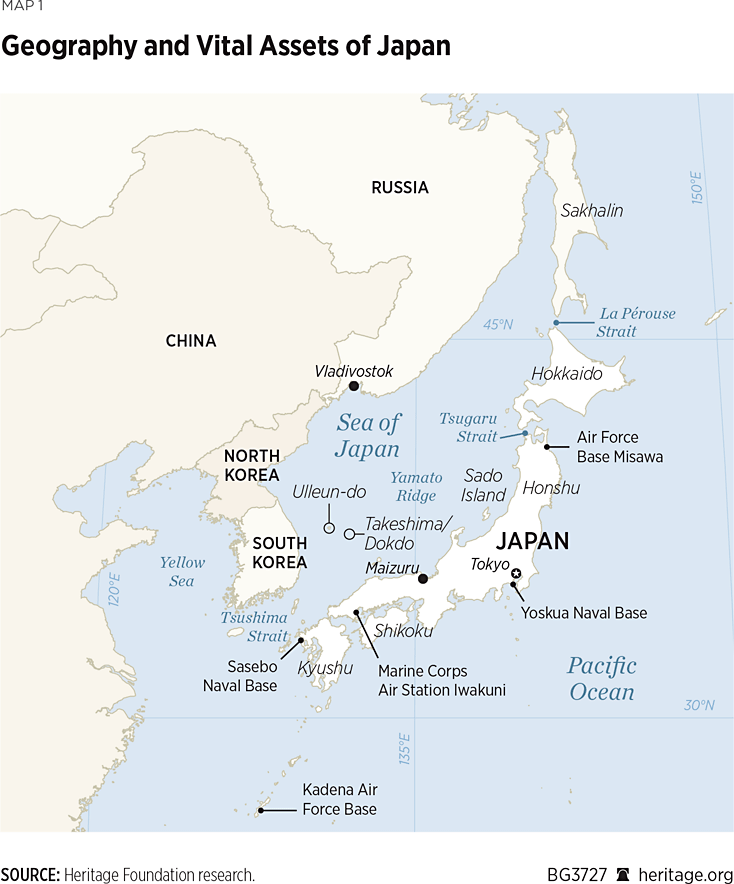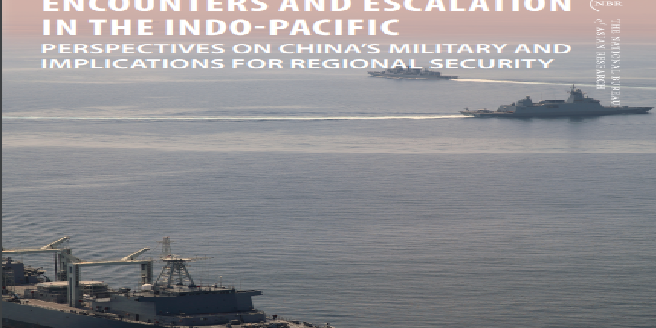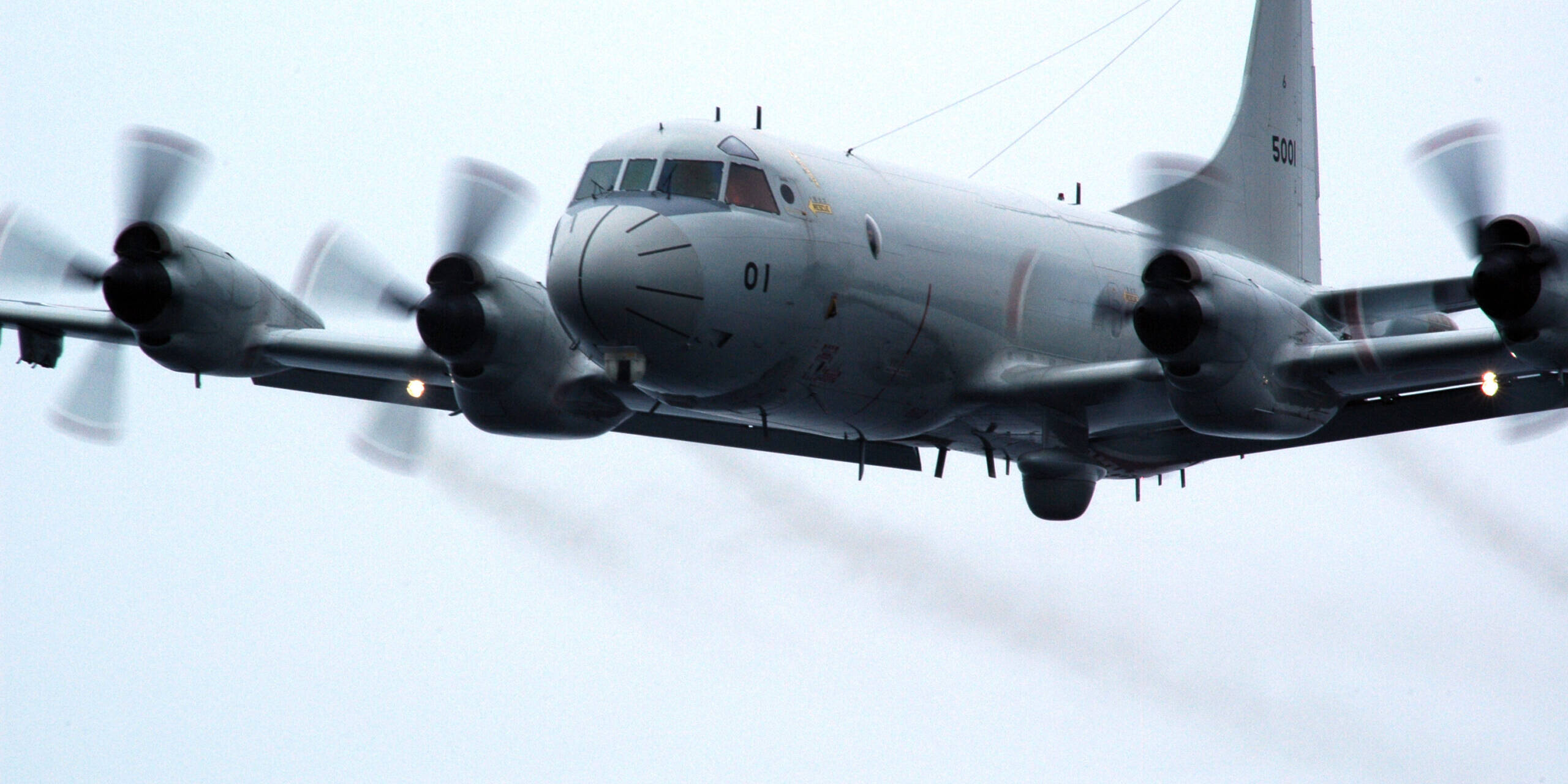Author: Brent Sadler for The Heritage Foundation
SUMMARY
KEY TAKEAWAYS
- The Sea of Japan is the intersection of America’s most dangerous adversaries and its most capable military and economic partners.
- As Russia, China, and North Korea work to undermine U.S. interests in these waters, Washington and Tokyo must not lose sight of China’s threat to Taiwan.
- Meeting these threats while deterring China will require minor naval posture changes and more support from Japan and South Korea.
Since the winter of 2021 and throughout Russia’s February 2022 invasion of Ukraine, the Russian Navy has been very active in Asia. On August 21, 2022, for example, 14 Russian warships sailed into the Sea of Japan for drills.1
But Russia is not alone in its renewed naval activism: China too has been stepping up its naval presence in the Sea of Japan. Importantly, this new naval activity has wider strategic implications for the entire region.
Failing to address increased Chinese and Russian activity in the Sea of Japan effectively could jeopardize the U.S.’s vital alliance with Japan and undermine regional deterrence—especially against Chinese adventurism. To prevent this, political leaders in Washington and Tokyo must view the region in the context of great-power competition with China while making modest naval posture changes in the region.
A Third Way to Secure U.S. Interests in Asia
The Sea of Japan is the intersection of three of America’s most dangerous adversaries: China, Russia, and North Korea. It is also home to two of the nation’s most capable military allies and significant economic partners: Japan (ranked fourth) and South Korea (ranked seventh).2
Broader U.S. interests therefore have been and will be served by focusing on narrow security interests in this region, but deterring China must be foremost on policymakers’ minds. This requires operating from a position of strength with respect to Taiwan, the Chinese Communist Party having made clear that its patience in waiting for a peaceful resolution is fast diminishing.3
Additionally, national missile defense benefits from early warning thanks to national and allied assets in the region defending against threats emanating from the Korean Peninsula and continental Asia. “From August 8–14, 2022,” for example, “the United States Navy, Japan Maritime Self-Defense Force, and Republic of Korea (ROK) Navy participated in a missile warning and ballistic missile search and tracking exercise during the multinational Pacific Dragon exercise off the coast of the Pacific Missile Range Facility (PMRF) in Hawaii.”4
Finally, regional action is needed to apply sanctions on the regimes in Moscow and Pyongyang.
While all of this is important, any American response must be measured to avoid weakening military force where it matters most: near Taiwan. A third way is needed that retains a strong military deterrent against China while addressing surging security dangers in the Sea of Japan. Easier written than executed, this third way will require the judicious application of military power in concert with greater combined involvement by Japan and South Korea. Convincing allies to meet this challenge should be relatively easy given the history of the region.
The Sea of Japan: A Once and Future Powder Keg
The demilitarized zone separating North Korea from South Korea has been an area of dispute since the 1953 armistice, and any post–Cold War hope that peace would break out in the region has since been put to rest. A new reality took hold with a North Korean nuclear test in 2006, but it was missiles overflying Japan in 1998 and 2009 that had the most profound impact on the region. North Korea’s provocations galvanized Tokyo to undertake more proactive regional security policies, which Chinese provocations in Japan’s southwest around the Senkaku Islands and rare earth embargoes in 2010 that constrained Japanese industrial output made even more necessary.5
Eventually, this spurred Tokyo to rebalance its military posture to the southwest and to view a Chinese assault on Taiwan as antithetical to its own self-defense. This rebalance has been helpful in responding to China’s rising military threat, but it could be undermined if limited resources are redirected to address emerging threats elsewhere.

In July 2019, Russian and Chinese long-range bombers, operating together for the first time, circumnavigated Takeshima/Dokdo Island in the Sea of Japan. Possession of this island is a subject of dispute between Japan and South Korea, and the ensuing recriminations between allies over their armed forces operating in disputed airspace served to obscure the more troubling Chinese and Russian activities.6
Chinese and Russian combined air operations have since been repeated in December 2020, November 2021, and during a Quadrilateral Security Dialogue (Quad)7 summit meeting hosted in Tokyo in May 2022.8
There also have been combined Russian and Chinese naval patrols in recent years. The most prominent of these occurred in October 2021 when a combined 10-ship flotilla sailed through the Tsugaru Strait between Japan’s main islands of Honshu and Hokkaido.9 Despite this activity, Japan’s security focus has remained on its southwest region—so far.
What Could Unsettle Japan’s Southwest Strategic Focus?
Obviously, not every Chinese, Russian, or North Korean military operation will require a response, but Japan must deal effectively with any incident that could turn into a politically sensitive crisis. Striking the right balance among these threats and establishing appropriate priorities is critical, and several trends should inform future planning.
The first trend is North Korea’s likely continuation of its long-range missile launches, resumption of nuclear testing, and routine deployments of its ballistic missile submarine.10 Such activities necessitate renewed emphasis on missile defense and an improved capacity to track North Korea’s submarines—especially its ballistic missile submarine. An attempt to address this threat with two Aegis Ashore sites faltered because of poor community outreach and operational planning.11
Today, Japan has two ballistic missile defense–capable destroyers based at Maizuru in the Sea of Japan, but a persistent defense requires additional ships, which are not anticipated to arrive until 2027.12 Therefore, it will be necessary to redeploy destroyers from other districts or deploy U.S. Seventh Fleet ships based in Yokosuka, Japan, which in turn will diminish our presence in the southwest near Taiwan and the South China Sea or reduce missile defense for the strategically important island of Guam.
To mitigate and cover current air and missile defense gaps, decommissioned ballistic missile defense (BMD)–capable U.S. Ticonderoga-class cruisers offer a near-term fix. These ships were designed to provide air defense to carrier strike groups, with later upgrades for BMD. Aging Ticonderoga-class cruisers with limited BMD capabilities have recently been or are going to be decommissioned.13 Their older analog radar systems, while still capable, have a limited capacity for engaging advanced missiles or multiple targets, but they would be adequate against North Korean ballistic or cruise missile threats. Manning these ships in a reduced operational condition provides several advantages.
- As a moored platform, they can be relocated as the threat and deconfliction with local activity require.
- The contribution of up to 244 vertical launch cells carrying an array of weapons from two such ships would bolster regional defenses and complicate Chinese war planning.
- It provides a platform to train Japan’s Self-Defense Forces (SDF), which may eventually operate future BMD-capable warships or a resurrected Aegis Ashore site. Importantly, transferring such cruisers to Japan as moored BMD platforms through what is called a “hot ship transfer” would avoid deactivation or reactivation costs.14
- This option also allows a potential pathway for developing a limited SDF strike capacity because these ships are platforms for targeting and employing Tomahawk cruise missiles.
The second trend is the continuation and expansion of routine Chinese and Russian combined naval and air missions in the region. To date, these have been short in duration, but future operations will likely become more prolonged, involve live-fire drills as is the case elsewhere, and include modern submarine deployments.
During recent Russian and Chinese combined naval operations in the Sea of Japan, Russian press mentioned that a Chinese submarine was participating. If this is true, modern Russian and Chinese submarines will add to the existing threat of North Korea’s submarines and create increased demand for a U.S. anti-submarine presence.
The Japan Maritime Self Defense Force (JMSDF) is responsible for securing Japan’s maritime interests in the Sea of Japan, but its capacity to match increasing Chinese, Russian, and North Korean naval incursions is questionable. Assigned forces include a large helicopter-carrying destroyer and two BMD-capable destroyers. The remaining four ships consist of three legacy (30 years old and older) destroyers and one modern destroyer intended for anti-submarine operations.
Increased Chinese and Russian air patrols are also taxing the Japan Air Self Defense Force (JASDF). Since 2004, the JASDF has recorded historic levels of intercepts, peaking at 1,168 sorties in 2016 and leveling at 725 in 2020.15 (This decline is the result of policies set in 2020 to respond only when encroachments directly threaten Japanese territorial airspace.16 An increase in air activity in the Sea of Japan would expand the geographic range that must be covered, posing new coordination and capacity challenges and potentially drawing on nearby U.S. air assets. Given their sensors and air defense weapons (such as SM-3 and SM-6 missiles), Ticonderoga-class cruisers would mitigate the burden on JASDF and U.S. aircraft to some extent.
The third trend is the increased burden that illegal fishing and sanctions-spurred smuggling will impose on Japan. In recent years, large Chinese fishing fleets licensed to fish in North Korea’s exclusive economic zone (EEZ) have put pressure on regional fishing stocks and ports. The issue gained international attention in 2016 when a large Chinese fishing fleet sheltered at the South Korean island of Ulleung-do.17 Associated overfishing has pushed ill-equipped North Korean fishing boats too far to sea, causing so-called ghost ships to wash ashore in Japan with their North Korean crews dead or dying from exposure when unable to return to port.18 Overfishing will drive these Chinese fishing fleets to follow the fish and squid into South Korean and Japanese waters.19
Additionally, sanctions on Russia will increase illicit seafood trade and smuggling to support an already strained Russian Far East’s access to auto parts and replacement cars.20 Before sanctions, imports of Japanese used cars topped 160,000 in 2021.21
To address these challenges, Japan Coast Guard’s 13 regionally based cutters will be hard-pressed to patrol the Japanese EEZ where China has operated 148 open-ocean fishing vessels.22
Finally, one wartime scenario is worth addressing because of its implications for the U.S.–Japan alliance: a Chinese threat or actual attack using tactical nuclear weapons against at-sea JMSDF forces,23 a scenario that strikes at a weakness of U.S. extended deterrence assurances and, although seemingly unlikely, is consistent with Chinese military doctrine. China might be inclined to make such threats or attack, hoping to limit Japan’s support for a war over Taiwan by taking advantage of a missing rung in the U.S. strategic escalation ladder. By threatening Japan’s naval forces in the Sea of Japan, the remoteness of the attack would seemingly negate greater escalation while involving historically significant regions of Japan.
What the U.S. Navy Brings to the Region
The U.S. Seventh Fleet based on Yokosuka, Japan, is responsible for naval operations in the region and has maintained only a modest presence in the Sea of Japan. That posture was significantly increased when the Abraham Lincoln carrier strike group conducted operations there in March 2022 following renewed North Korean intercontinental ballistic missile tests.24 This was the first time in five years that a carrier strike group had operated in these waters. Moreover, out of an abundance of caution to avoid Chinese and Russian observation, most bilateral exercises with the JMSDF are not conducted in the Sea of Japan. This strategy makes sense but comes at a cost: diminished regional awareness of the conditions under which naval forces would fight and familiarity with the forces with which the U.S. fleet would operate, to include South Korea’s.
Additional ships are needed to increase presence in the region and avoid diminishing deterrence in the Southwest, and this will tax already strained ship repair facilities (SRF) in Yokosuka and Sasebo. Japanese shipyards today have latent capacity for increased work on U.S. warships.25 This is not a novel idea; the U.S. destroyer Milius conducted repairs in April 2019 at Mitsubishi Heavy Industry’s Yokohama dockyard near its homeport of Yokosuka.26
Balancing Sasebo and Yokosuka workloads this way also avoids a thorny domestic political issue: the basing burden on Okinawa. For years, the Okinawan people have protested what they view as an unfair burden for hosting more than 70 percent of U.S. forces in Japan and have advocated relocating U.S. Marine Corps bases off-island.27That effort was part of the now-stalled 2002 Defense Policy Review Initiative (DPRI), which has only partially relocated Marines off of Okinawa and constructed a replacement base in Okinawa at Henoko.28 It is possible that both the U.S. and Japanese governments could demonstrate a willingness to balance the basing burden more equitably across Japan.
What the Administration Should Do
A balanced approach is needed that both sustains the prioritization of military resources to southwest Japan and effectively addresses challenges emanating across the Sea of Japan. To achieve this, the Administration should:
- Engage Japan’s National Security Secretariat on preparing combined national-level responses to provocations in the Sea of Japan. The 2015 Defense Guidelines’ Alliance Coordination Mechanism, if fully utilized, can enable this sort of planning and coordination during a crisis while also serving as a platform for orchestrating more proactive strategic initiatives.29 This mechanism as envisioned would enable iterative and ongoing planning between the Japan National Security Secretariat and the U.S. National Security Council. Additionally, a working group should be established within this mechanism that is tasked specifically with enhancing combined naval presence and crisis response in the Sea of Japan. Learning from the DPRI, this group would sustain national political attention as it works through the tricky political and budgetary arrangements that basing adjustments and long-range deployment planning require. One reason why the highly complex DPRI initiative stalled was episodic national bilateral attention, which the Alliance Coordination Mechanism could mitigate.
- Encourage agreement between the Japan Coast Guard and South Korea Coast Guard to enforce common maritime law. As Russia’s economic isolation tightens, illegal activities like smuggling, sanctions violations, and illegal, unreported, and unregulated (IUU) fishing across the Sea of Japan to sustain Russia’s Far East can be expected to increase. This will place added strain on the Japan Coast Guard, which is already trying to adjust to increased Chinese illegal fishing activity. A memorandum of understanding between Japan and South Korea can help the two countries to devise ways to share the maritime security workload as illicit activity increases.
- Offer Japan a near-term alternative to the cancelled Aegis Ashore. One option is to repurpose decommissioned BMD-capable U.S. Ticonderoga-class cruisers as a moored defense platform.30To support the Secretary of Defense in this effort most effectively, the Secretary of the Navy should establish a special task force for repurposing or transferring legacy Aegis cruisers. These ships, while limited in their ability to defend against high-end Chinese and Russian missile threats, would give the JMSDF a familiar platform after decades of experience with the Kongo class and its successors.
- Task the Secretary of the Navy with negotiating greater access and support for U.S. vessels at JMSDF bases in the Sea of Japan. Such tasking is within the Title 10 statutory purview of the Secretary of Defense and draws on the capabilities of the Secretary of the Navy, who is best positioned to seek and implement deployment and home port changes.31 The Secretary of the Navy would be expected to work with the Office of the Secretary of Defense and offices of the Department of State that have overlapping responsibilities in managing the security relationship with Japan. If accomplished, new basing and deployment patterns could enable enhanced presence in the region and develop a distributed logistic network.
- Extend deployments of modern and capable anti-submarine platforms to the Sea of Japan. The JMSDF has limited anti-submarine capacity in the Sea of Japan to prosecute modern Chinese and Russian submarines without drawing from other maritime districts. Forces that once were adequate for meeting an inferior North Korean submarine threat and limited Russian presence are no longer adequate as China increasingly operates modern submarines in this region. Additionally, U.S. and South Korean navies should participate in increasingly complex anti-submarine exercises in the region while routinizing trilateral at-sea operational coordination.
Conclusion: The Danger of Inaction
The greatest danger to the U.S. in this decade remains a war with China, most likely in the waters around Taiwan. Japan shares this risk and has focused its growing defense budget on this threat, but a significant incident in the Sea of Japan could create insurmountable domestic pressures to refocus elsewhere. This would place added pressure on the U.S. to deter Chinese aggression against Taiwan.
To avoid jeopardizing deterrence in the Southwest, institutional awareness of the possibility of a crisis in the Sea of Japan and development of appropriate response plans will be needed. However, today’s U.S. Navy and JMSDF forces in the Sea of Japan are not adequate for this task; new basing arrangements and deployment patterns will be required.
Dzirhan Mahadzir, “14 Russian Warships Enter Sea of Japan Ahead of Major Military Exercises,” U.S. Naval Institute News, August 23, 2022, https://news.usni.org/2022/08/23/14-russian-warships-enter-sea-of-japan-ahead-of-major-military-exercises#:~:text=14%20Russian%20Warships%20Enter%20Sea%20of%20Japan%20Ahead%20of%20Major%20Military%20Exercises,-By%3A%20Dzirhan%20Mahadzir&text=A%20group%20of%2014%20Russian,of%20Defense%20said%20on%20Monday (accessed September 21, 2022).
Executive Office of the President, Office of the United States Trade Representative, “Countries & Regions,” https://ustr.gov/countries-regions#:~:text=The%20top%20five%20purchasers%20of,Union%2027%20were%20%24267.6%20billion (accessed September 21, 2022).
David Sacks, “What Xi Jinping’s Major Speech Means for Taiwan,” Council on Foreign Relations, Asia Unbound Blog, July 6, 2021, https://www.cfr.org/blog/what-xi-jinpings-major-speech-means-taiwan (accessed September 21, 2022).
News release, “U.S., Republic of Korea, and Japan Participate in Missile Defense Exercise in Hawaii,” U.S. Department of Defense, August 15, 2022, https://www.defense.gov/News/Releases/Release/Article/3128442/us-republic-of-korea-and-japan-participate-in-missile-defense-exercise-in-hawaii/ (accessed September 21, 2022).
Carlyle A. Thayer, “The Senkaku Islands Dispute: Risk to U.S. Rebalancing in the Asia–Pacific?” U.S. Naval Institute News, updated February 5, 2013, https://news.usni.org/2012/10/16/senkaku-islands-dispute-risk-us-rebalancing-asia-pacific (accessed September 21, 2022).
Jeremy Page, “China Promises Further Military Cooperation with Russia,” The Wall Street Journal, updated July 24, 2019, https://www.wsj.com/articles/china-promises-further-military-cooperation-with-russia-11563973937 (accessed September 21, 2022).
The Quad is a partnership among India, Japan, Australia, and the U.S. that was formed to support a free and open Indo-Pacific. The Quad first emerged in 2006–2008 and later atrophied, only to be resurrected in 2017 amid participants’ heightened tensions with China. The fourth summit was held in Tokyo, Japan, on May 24, 2022.
Kyodo News, “China, Russia Fly 6 Bombers over Waters Near Japan During Quad Summit,” May 25, 2022, https://english.kyodonews.net/news/2022/05/a9eb3e528919-china-russia-fly-6-bombers-over-waters-near-japan-during-quad-summit.html (accessed September 21, 2022).
Brad Lendon, “Why Russian and Chinese Warships Teaming up to Circle Japan Is a Big Deal,” CNN, updated October 25, 2021, https://www.cnn.com/2021/10/25/asia/china-russia-naval-flotilla-circles-japan-intl-hnk-ml/index.html (accessed September 21, 2022).
Peter Brookes, “The U.S. Must Respond to North Korea’s Emerging Submarine-Launched Ballistic Missile Program,” Heritage Foundation Backgrounder No. 3538, October 6, 2020, https://www.heritage.org/missile-defense/report/the-us-must-respond-north-koreas-emerging-submarine-launched-ballistic.
Jeffrey W. Hornung, “Japan Is Canceling a U.S. Missile Defense System,” RAND Corporation, The RAND Blog, July 6, 2020, https://www.rand.org/blog/2020/07/japan -is-canceling-a-us-missile-defense-system.html (accessed September 21, 2022).
Yoshihiro Inaba, “Japan Moves Forward with Aegis Equipped Ship Project. But Is It Enough?” Naval News, October 11, 2021, https://www.navalnews.com/naval-news/2021/10/japan-moves-forward-with-aegis-equipped-ship/ (accessed September 21, 2022).
Heather Mongilio, “Navy Wants to Decommission 39 Warships in 2023,” U.S. Naval Institute News, August 15, 2022, https://news.usni.org/2022/08/15/navy-wants-to-decommission-39-warships-in-2023 (accessed September 21, 2022), and Office of the Chief of Naval Operations, Deputy Chief of Naval Operations (Warfighting Requirements and Capabilities–OPNAV N9), Report to Congress on the Annual Long-Range Plan for Construction of Naval Vessels for Fiscal Year 2022, June 2021, p. 12, https://s3.documentcloud.org/documents/20961220/pb22-shipbuilding-plan-june-2021_final.pdf ( accessed September 21, 2022).
U.S. Department of Defense, Department of the Navy, Office of the Secretary, “Transfer of U.S. Naval Vessels to Foreign Governments and International Organizations,” SECNAV Instruction 4900.50B, May 9, 2019, pp. 4–5, https://www.secnav.navy.mil/doni/Directives/04000%20Logistical%20Support%20and%20Services/04-900%20Foreign%20Military%20Assistance%20and%20Mutual%20Security%20Services/4900.50B.pdf (accessed September 21, 2022).
Ministry of Defense of Japan, “Defense of Japan,” 2021, pp. 15, 17–18, and 25, https://www.mod.go.jp/en/publ/w_paper/wp2021/DOJ2021_Digest_EN.pdf (accessed September 21, 2022).
Clement Charpentreau, “Japan Reduces Chinese Interceptions as It Deploys F-35s,” Aerotime Hub, March 4, 2021, https://defence.pk/pdf/threads/japan-reduces-chinese-interceptions-as-it-deploys-f-35s.703621/ (accessed September 21, 2022).
Ian Urbina, “The Deadly Secret of China’s Invisible Armada,” NBC News, July 22, 2020, https://www.nbcnews.com/specials/china-illegal-fishing-fleet/ (accessed September 21, 2022).
Ian Urbina, “The Origin of North Korea’s ‘Ghost Boats’,” BBC, September 9, 2020, https://www.bbc.com/future/article/20200909-the-origin-of-north-koreas-ghost-boats (accessed September 21, 2022).
“日本海大和堆の違法中国漁船が激減水産庁 [Dramatic Decrease in Illegal Chinese Fishing Boats in the Yamato Bank of the Sea of Japan Fisheries Agency],” TV Asahi, August 5, 2022, https://news.tv-asahi.co.jp/news_economy/articles/000264091.html (accessed August 14, 2022), and SankeiBiz, “大和堆(やまとたい)で北朝鮮の違法操業が深刻化日本の漁業者苦境 [North Korea’s Illegal Fishing in the Yamato Bank Becomes a Serious Problem for Japanese Fishermen],” January 9, 2020, https://www.sankeibiz.jp/workstyle/news/200109/cpd2001090857001-n1.htm (accessed September 21, 2022).
Andrew Roth and Pjotr Sauer, “‘The Return of Banditry’: Russian Car Industry Buckles Under Sanctions,” The Guardian, June 11, 2022, https://www.theguardian.com/world/2022/jun/11/the-return-of-banditry-russian-car-industry-buckles-under-sanctions (accessed September 21, 2022).
Asia News Network, “Russia–Ukraine Conflict Buffeting Japan’s Used-Car Market,” April 21, 2022, https://asianews.network/russia-ukraine-conflict-buffeting-japans-used-car-market/ (accessed September 21, 2022), and United Press International, “Japan Charges Russians Stole 140 Cars,” September 28, 2012, https://www.upi.com/Top_News/World-News/2012/09/28/Japan-charges-Russians-stole-140-cars/99611348846514/ (accessed September 21, 2022).
Discussions with staff at Japan Coast Guard headquarters in Tokyo, Japan, July 1, 2022.
This concern that Japan would be caught in a costly war is shared by Professor Narushige Michishita of the Graduate Institute for Policy Studies in Tokyo, Japan, and many other Japanese.
Diana Stancy Correll, “USS Abraham Lincoln Operating in Sea of Japan Following North Korea Missile Tests,” Navy Times, April 12, 2022, https://www.navytimes.com/news/your-navy/2022/04/12/uss-abraham-lincoln-operating-in-sea-of-japan-following-north-korea-missile-tests/ (accessed September 21, 2022).
Ministry of Foreign Affairs of Japan, “Entry into Force of the New Special Measures Agreement (SMA),” April 1, 2020, https://www.mofa.go.jp/region/n-america/us/security/hns.html (accessed September 21, 2022).
USS Milius homepage, last modified September 15, 2022, http://www.uscarriers.net/ddg69history.htm (accessed September 21, 2022).
Kyodo News, “Okinawa Urges PM to Scrap U.S. Base Move Plan Before Key Anniversary,” May 10, 2022, https://english.kyodonews.net/news/2022/05/591d25652c39-okinawa-urges-pm-to-scrap-us-base-move-plan-before-key-anniversary.html (accessed September 21, 2022).
Emma Chanlett-Avery, Caitlin Campbell, and Joshua A. Williams, “The U.S.–Japan Alliance,” Congressional Research Service Report for Members and Committees of Congress No. RL33740, updated June 13, 2019, pp. 28–29, https://sgp.fas.org/crs/row/RL33740.pdf (accessed September 21, 2022).
Ministry of Foreign Affairs of Japan, “The Guidelines for Japan–U.S. Defense Cooperation,” April 27, 2015, p. 3, https://www.mofa.go.jp/files/000078188.pdf (accessed September 21, 2022).
Brent D. Sadler, “Repurposing Navy Cruisers Planned for Decommissioning: An Interim Capability for Countering Chinese Missile Attacks on Guam,” Heritage Foundation Issue Brief No. 5208, August 23, 2021, https://www.heritage.org/defense/report/repurposing-navy-cruisers-planned-decommissioning-interim-capability-countering.
U.S.C. § 8013, https://www.govinfo.gov/content/pkg/USCODE-2020-title10/html/USCODE-2020-title10-subtitleC-partI-chap803-sec8013.htm (accessed September 21, 2022).
Brent D. Sadler is Senior Research Fellow for Naval Warfare and Advanced Technology in the Center for National Defense at The Heritage Foundation.
Click here to read the original article at The Heritage Foundation.
Feature Image: USS Ronald Reagan hosts Japan Prime Minister Kishida during International Fleet Review/ U.S. Indo-Pacific Command Flickr


